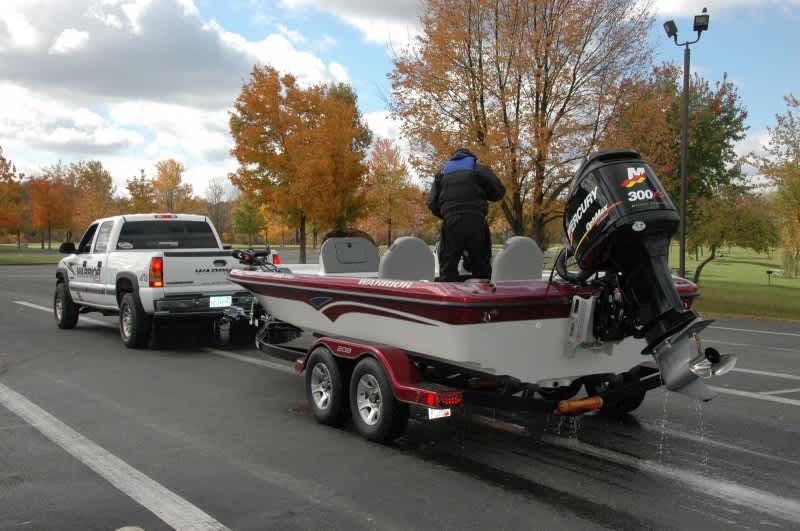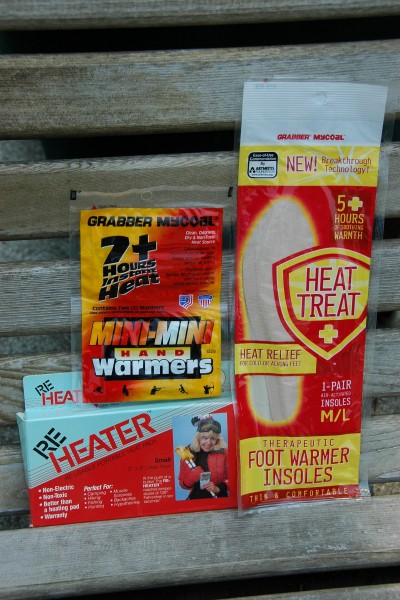Conquering the Cold Shoulder Seasons on the Water
Dan Armitage 10.29.13

It’s common knowledge—if not altogether true—that more than half a body’s heat can be lost through the head, and hats and caps are standard attire for many late-season anglers. We’re not talking the traditional logo’d “gimmee” ball caps that everyone dons once fair weather hits; anglers jigging away in sub-freezing air temperatures cover their noggins with everything from Windstopper-lined watch caps and insulated toboggans to wolverine-fur-trimmed hoods and face masks.
When underway aboard their boats in the late season, anglers don ski goggles, bubble shields, face masks, or snowmobile helmets to protect them from sub-zero wind chills generated by their fleet forward progress through the chilled air. Chemical heat packs may be employed under the headgear as well, stuffed under caps and ear bands, and you’ll often see early- and late-season anglers saving face by wearing heat-exchanging masks, such as those from Polar Wrap, that “recycle” exhaled air to help keep the face and body warm.
The brain’s first line of defense when the going gets so cold that it threatens the body core temperature is to restrict the flow of blood to the expendable extremities and concentrate its life-sustaining warmth on the more essential internal organs. That’s why ears and digits are the first to feel the chill and suffer the consequences of bone-chilling temperatures. Proper swaddling with hats, caps, and muffs can protect the ears from the cold, but fingers and toes are a trickier subject because anglers rely on the mobility and dexterity these digits provide to fish effectively. The over-sized mittens, insulated boot wraps and full-body bags that keep you comfortable while watching late-season football games from the stands do not allow the mobility needed to finesse, fight, and land a fish out on the water.

Some anglers wear traditional lace-up boots lined with 1,000-or-higher-denier insulation. They buy the boots a size larger than their shoe size to allow room for a liner and a thick wool sock for additional insulation while allowing their toes to wiggle to keep that blood flowing. Some anglers may tuck a chemical heater pack in each boot, placing it between the liner and the primary sock so it’s not directly against the skin, for an additional, external heat source. Grabber offers pairs of sole-shaped heater inserts, called the Foot Warmer, which warm the entire foot from the bottom up.
Electric socks containing heating elements are a toe-warming option as well. Battery-powered socks are available from a variety of sources, and at least one company offers socks that can be powered from a boat’s 12-volt electrical system. The problem with portable, battery-powered socks is that unless they have an adjustable thermostat, the heating elements typically offer too much heat at first—and too little later—to offer consistent, long-term toe comfort.
Fingers are the digits most dear to fishermen, and keeping them warm yet available for tying knots, baiting hooks, cranking reel handles, and operating a boat in sub-freezing temperatures is a challenge. Fingerless gloves work well when lined pockets or external heat sources are handy, but those that combine a flip-over mitt, like the Glomitt from Cabela’s, are better. Because they keep the fingers together to share their generated heat, mittens are much warmer that gloves, so the combo-convertible styles offer the best of both worlds by keeping fingers warm yet instantly accessible.
So does a muff or hand-warmer, worn around the waist, in which you can place chemical heater packs to complement the insulation. One finger-saving tactic popular with ice anglers that some cold-weather fishermen employ is coating their hands and fingers with petroleum jelly. A thin coat of Vaseline not only provides an extra insulation layer but renders the hands waterproof. After getting the hand wet while baiting a hook or setting a slip bobber all it takes is a couple of brisk shakes of the hand to fling off any warmth-robbing water.
Just remember to wipe the jelly off before donning a glove—or grabbing the steering wheel.

